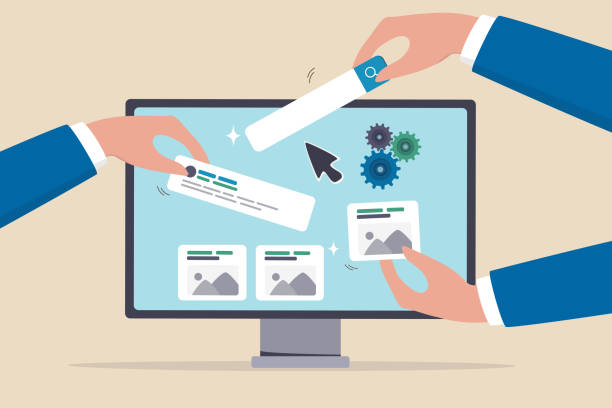The Importance of Modern UI Website Design in Today’s World
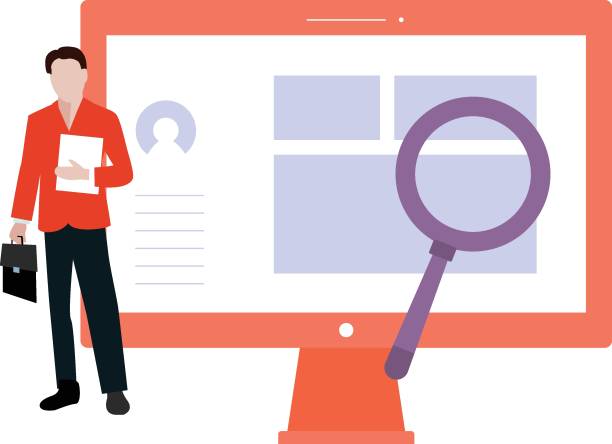
In today’s digital age, where online competition has reached its peak, modern UI website design is no longer a luxury choice, but a vital necessity for any business.
An outdated website design or a confusing user interface can quickly deter users and lead to the loss of countless opportunities.
In contrast, a web design with a modern user experience creates a strong bridge between your business and its audience.
This user interface not only prioritizes visual aesthetics but also emphasizes efficiency, accessibility, and ease of use.
The main goal of this type of design is to create a seamless and enjoyable user experience that encourages users to stay longer on the site, engage more deeply, and ultimately perform desired actions (such as purchasing or registering).
This descriptive approach helps us understand why investing in modern UI website design brings a significant return on investment.
Your website is the first point of contact for many potential customers with your brand, and an attractive and efficient user interface can create a lasting positive first impression.
Modern UI goes beyond colors and fonts; this approach means deeply understanding user needs, anticipating their behavior, and providing visual and interactive solutions that make the user’s journey on the site as pleasant and frictionless as possible.
The importance of accessibility and page loading speed is also very high; no user wants to wait a long time for a page to load or be unable to easily access site content across different devices.
These points are all parts of building a website with modern UI, aiming not only to attract but also to retain and convert visitors into loyal customers.
Paying attention to these aspects paves the way for online success and ensures that your site will stand out among the multitude of competitors.
Did you know that 85% of customers check your company’s website before any interaction?
With Rasabweb, build a corporate website worthy of your credibility.
✅ Increase customer credibility and trust
✅ Attract high-quality leads
⚡ Get free website design consultation
Key Principles in Modern and Attractive User Interface Design

To achieve an attractive and efficient user interface, adhering to specific principles in modern UI website design is essential.
The first and most important principle is simplicity.
The user interface should not be cluttered with unnecessary elements; every element must have a clear purpose and help the user achieve their goal.
The second principle is consistency.
Consistent use of colors, fonts, icons, and interactive patterns throughout the website makes users feel familiar and allows them to navigate easily across different sections of the site.
This consistency is important not only in the internal design of the site but also in harmony with the overall business branding.
The principle of feedback is also vital; users should always know what the outcome of their action was; for example, after clicking a button, they should be given a visual indication that the action has been performed (such as a button color change or a success message display).
Accessibility is another fundamental principle that is often overlooked.
A website should be accessible to all users, regardless of their physical abilities or the equipment they use.
This includes attention to color contrast, font sizes, and support for assistive tools like screen readers.
Visual Hierarchy means organizing elements in such a way that the most important information or actions stand out and attract the user’s attention.
For instance, primary Call to Action buttons should be prominent and easily distinguishable.
Finally, repetition means using specific design patterns to create unity and coherence in the overall appearance of the site, which helps improve brand recognition.
By implementing these principles, one can achieve truly effective modern UI website design.
This educational approach helps developers and designers build a strong foundation for their projects.
The Role of User Experience (UX) in Modern Website Design Success
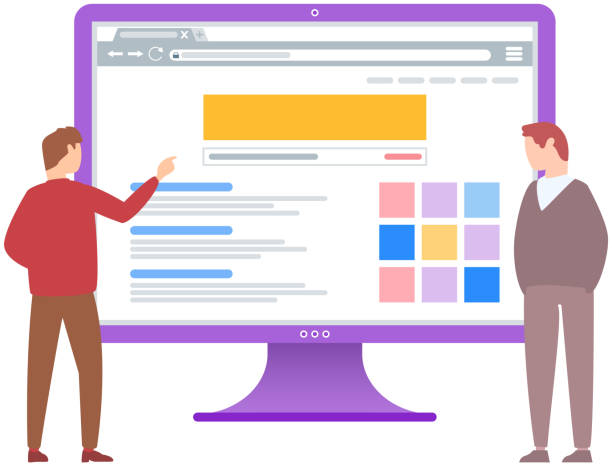
When discussing modern UI website design, one cannot overlook the vital role of user experience (UX).
While User Interface (UI) deals with the visual appearance and feel of a website, User Experience (UX) relates to how the user interacts with the site and their overall feeling during this interaction.
Simply put, UI is “how it looks” and UX is “how it works and what it feels like to the user”.
A beautiful UI without strong UX is like a luxury car without a powerful engine – it might be eye-catching, but it won’t be functional.
For a website to succeed, both aspects must work in complete harmony.
UX design involves multiple stages, beginning with a deep understanding of users.
These stages include User Research to identify user needs, behaviors, and pain points.
Following that, creating User Personas to represent different target user groups, and then mapping out User Journeys that show the user’s interaction stages with the site from start to finish.
Wireframing and Prototyping are the next steps that allow designers to test and optimize the site’s structure and flow before diving into visual details.
User Testing is also of high importance, as real user feedback reveals the design’s strengths and weaknesses.
This specialized approach ensures that modern UI website design is not only beautiful but also functional, effective, and enjoyable.
Continuous optimization based on feedback and data analysis is key to continuously improving the user experience and ultimately increasing user satisfaction and achieving business goals.
The table below shows the main differences between UI and UX:
| Feature | User Interface (UI) | User Experience (UX) |
|---|---|---|
| Main Focus | Visual appearance and feel, graphic elements, interactions | User feelings, usability, ease of use, user journey |
| Ultimate Goal | Visual appeal, aesthetics | User satisfaction, efficiency, solving user problems |
| Common Tools | Figma, Sketch, Adobe XD, Photoshop | User Flows, Wireframes, Prototypes, User Testing tools |
| Central Question | “How does it look?” | “How does it work and what does it feel like to the user?” |
New Tools and Technologies for Advanced UI Website Design
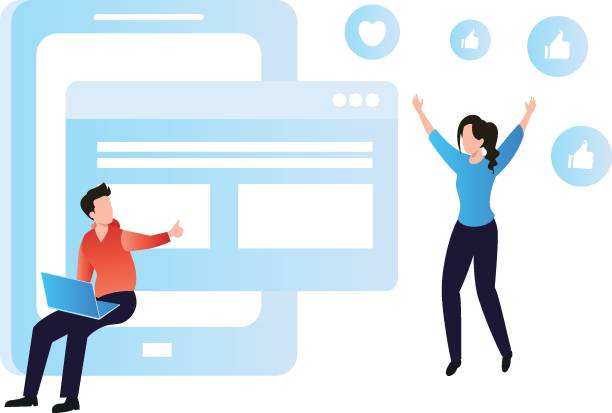
In today’s world of web design, choosing the right tools and technologies for modern UI website design plays a vital role in the speed, quality, and efficiency of the development process.
Fortunately, the web design and development tools ecosystem is rapidly evolving, and every day we witness the emergence of new and more advanced capabilities.
In the design section, software like Figma, Sketch, and Adobe XD have become industry-standard tools.
These tools provide collaborative design, interactive prototyping, and rapid wireframing capabilities, which are highly valuable for UI/UX design teams.
Common features such as component libraries, design systems, and easy sharing capabilities make the design process integrated and efficient.
On the other hand, in front-end development, JavaScript frameworks like React, Vue.js, and Angular have revolutionized how dynamic and responsive user interfaces are built.
These frameworks, by offering capabilities such as component-based architecture, advanced state management, and server-side rendering (SSR), have elevated the development of modern UI website design to a higher level.
Using these frameworks not only increases development speed but also significantly helps improve performance and user experience.
Furthermore, code management tools like Git and platforms like GitHub or GitLab are essential for team collaboration and managing different project versions.
Also, for optimizing loading speed and performance, tools like Google Lighthouse and WebPageTest help identify and resolve performance issues.
Finally, Content Management Systems (CMS) like WordPress (using page builders such as Elementor or Beaver Builder) and Headless CMS like Strapi or Contentful can also provide a powerful platform for creating websites with advanced user interfaces.
This comprehensive guide helps developers choose the best tools for their projects.
Are you worried about losing customers because you don’t have a professional e-commerce site?
With e-commerce website design by Rasabweb, forget these worries!
✅ Significant increase in sales and visitor-to-customer conversion rate
✅ Professional and user-friendly design that gains customer trust
⚡ Get free consultation from Rasabweb
Responsive Design and Mobile-First Approach in User Interface

In today’s world, where the variety of devices for accessing the internet is soaring, modern UI website design would be incomplete without considering the principles of Responsive Design and Mobile-First approach.
Responsive design means creating a website that automatically adapts its appearance and functionality to the screen size of the user’s device (whether desktop, tablet, or mobile).
This means there’s no longer a need to design separate versions for each device; instead, a single design is flexible enough to display optimally at any size.
This descriptive approach tells us how we can ensure that all users, regardless of their device, have a consistent experience with our website.
The mobile-first approach is a step beyond responsive design.
In this methodology, designers first start designing and developing the website for the smallest screen (usually mobile) and then gradually add features and design elements for larger screens.
The reason for this approach is that internet traffic from mobile devices is increasingly growing, and many users gain their first experience with a website via mobile.
By prioritizing mobile, designers are forced to focus on core content and functionality, avoiding clutter and the addition of unnecessary elements.
This leads to a simpler, faster, and more optimized user experience, which can then be enriched for larger screens.
Creating a website with an advanced user interface with a focus on mobile means ensuring accessibility and efficiency for a vast percentage of users, and it also has a direct impact on customer satisfaction and Search Engine Optimization (SEO), as Google and other search engines prefer mobile-friendly websites in their rankings.
Current and Future Trends in Web Design with Modern User Experience
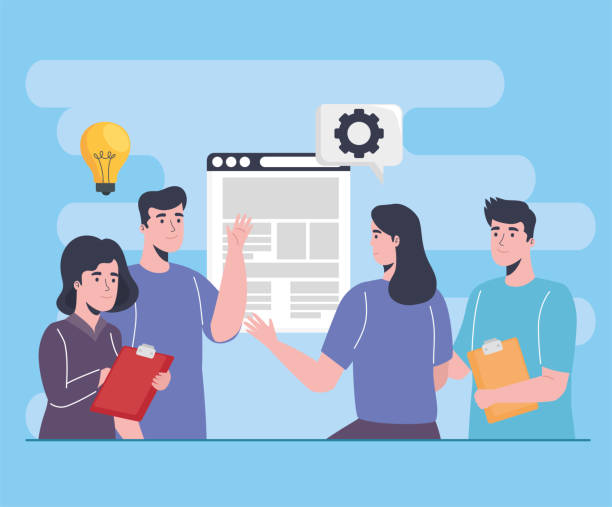
The world of web design is constantly evolving, and this makes continuous awareness of trends important for modern UI website design.
One of the important current trends is the expansion of Dark Mode, which not only has visual appeal but also helps reduce eye strain and save battery consumption on OLED devices.
Minimism in design remains popular; focusing on core content, removing unnecessary elements, and ample whitespace help the user concentrate on important information and have a clearer user experience.
Furthermore, Micro-interactions, such as small animations on click or scroll, help improve the user experience and create an entertaining and interactive feel on the site.
In terms of emerging technologies, the integration of Artificial Intelligence (AI) and Machine Learning (ML) into web user interfaces is increasing.
These technologies can provide more personalized user experiences, such as content recommendations, smart chatbots, and adaptive user interfaces that change based on user behavior.
Also, Voice User Interfaces (Voice UI) are gradually finding their place on the web, especially with the increased use of voice assistants.
In the future, it can be expected that Augmented Reality (AR) and Virtual Reality (VR) will also play a more prominent role in building websites with modern UI, offering fully immersive user experiences.
These trends indicate that modern UI website design is moving towards more interactive, personalized, and intelligent experiences.
This news and analytical review helps developers prepare themselves for the future and keep pace with global trends to always stay at the forefront of innovation.
The Impact of Modern UI Website Design on Business Goals
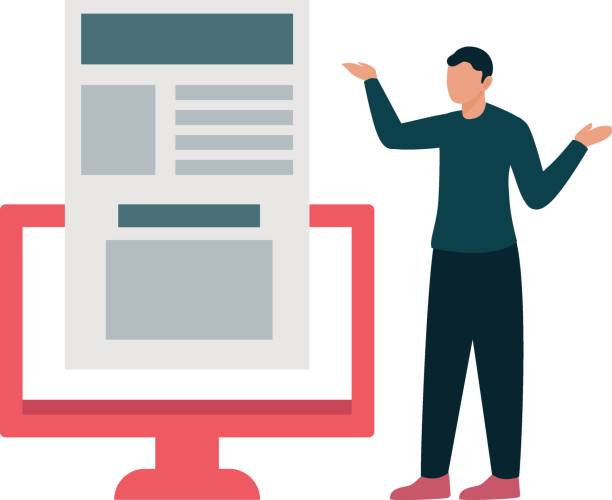
The success of any business in the online space depends on the extent to which its business goals are achieved.
In this regard, modern UI website design plays a very pivotal role and has a direct impact on key performance indicators.
One of the most important effects is an increase in the Conversion Rate.
When users can easily find products, obtain necessary information, and complete the purchase or registration process without issues, the likelihood of performing the desired action will be much higher.
An intuitive and attractive user interface smooths the user’s path to their goal and significantly reduces the likelihood of them leaving the site (Bounce Rate).
Furthermore, modern UI helps strengthen brand image and build customer loyalty.
A website with a professional appearance and flawless performance builds trust in users and encourages them to return to the site.
This is especially vital for e-commerce.
Improving user experience also helps with Search Engine Optimization (SEO); search engines give higher rankings to websites that provide a good user experience because these sites have lower bounce rates and longer dwell times.
This analysis shows that modern UI website design is not just an investment in appearance, but a strategic investment in overall business success.
By understanding these impacts, we can make more informed decisions to improve our online presence.
The table below shows some Key Performance Indicators (KPIs) that are directly affected by good UI/UX:
| Performance Indicator | Impact of Modern UI/UX |
|---|---|
| Conversion Rate | Significant increase with optimized user journey and clear CTAs |
| Bounce Rate | Noticeable reduction due to site attractiveness and efficiency |
| Dwell Time | Increase due to organized content and interactivity |
| Customer Satisfaction | Increased loyalty and positive brand experience |
| SEO Ranking | Improvement due to positive user signals to search engines |
Common Mistakes in User Interface Design and Ways to Avoid Them

Even with the best intentions and knowledge of design principles, mistakes can occur in the process of modern UI website design that can severely impact the user experience.
One of the most common mistakes is a cluttered and complex user interface.
Sometimes designers try to fit all information and options on one page, which leads to user confusion.
The solution to this problem is to focus on the principle of simplicity and minimalism, and to logically organize content using visual hierarchy and clear navigation.
Every element must have a reason for existing.
Another common mistake is poor and illogical navigation.
If users cannot easily find their way around the site or access the information they need, they will quickly leave.
Using clear menus, breadcrumbs, and efficient search can solve this problem.
Ignoring loading speed is also a major error.
Today’s users are impatient, and a slow site quickly drives them away.
Optimizing images, using clean and efficient code, and compressing files are essential for increasing loading speed.
Neglecting accessibility for people with disabilities, or ignoring user testing and real user feedback, are also fatal mistakes that can severely reduce the quality of modern UI website design.
By avoiding these mistakes and performing continuous tests and receiving feedback, websites can be built that are not only beautiful but also truly useful and efficient for users.
This educational approach and guidance help designers achieve the best results in their projects and avoid common pitfalls.
Did you know that customers’ first impression of your company is your website? With a powerful corporate website from Rasabweb, multiply your business’s credibility!
✅ Custom and eye-catching design tailored to your brand
✅ Improved user experience and increased customer acquisition
⚡ Get free consultation!
Can Modern User Interface Replace Human Experience?
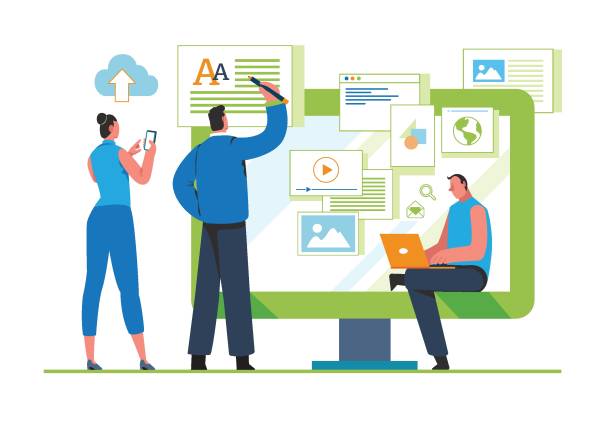
With remarkable advancements in Artificial Intelligence, Augmented Reality, and complex digital interactions, a fundamental question arises: will modern UI website design in the future move towards completely eliminating and replacing human experience and empathy? At a glance, advanced user interfaces with high personalization capabilities and instant responsiveness can provide a highly efficient and useful experience.
Smart chatbots and virtual assistants can respond to user needs at any hour of the day or night and provide accurate and relevant information.
However, it must be acknowledged that even the most advanced user interfaces cannot fully replace human connection, empathy, and deep understanding of unspoken emotions and needs.
In some cases, users need to speak with a real human to explain specific complexities or receive personalized guidance.
Modern UI should be seen as a tool to enhance and facilitate the human experience, not to replace it.
The main goal of creating websites with advanced user interfaces should be to build a bridge between technology and human needs, making interactions simpler and more enjoyable, while preserving a sense of connection and authenticity.
The main challenge in modern UI website design in the future will be finding the right balance between automation and the human touch.
Can user interfaces be built that are intelligent but soulless? Can technology be trusted enough to entrust all aspects of human interactions to it? These questions form thought-provoking content that will occupy the web design community in the coming years, and their answers will determine the path of modern UI website design.
Conclusion and Future Outlook of Modern UI Website Design

At the end of this extensive discussion about modern UI website design, it can be concluded that this field is no longer limited to aesthetics but has become a backbone for the success of any business in the online space.
A modern user interface should not only be attractive and visual but also functional, simple, and most importantly, built upon a deep and conceptual user experience.
We examined the importance of principles such as simplicity, consistency, feedback, and accessibility, and also highlighted the role of advanced tools and modern frameworks in accelerating and improving the development process.
Looking to the future, it can be predicted that modern UI website design will move towards greater personalization, intelligent interactions based on artificial intelligence, and deeper integration with new technologies such as augmented reality.
Also, the importance of the mobile-first approach and responsive design will become even more apparent, as users access the web through a wider variety of devices.
The main challenge for designers in the future will be finding a balance between advanced technology and preserving the human aspects of user experience.
The ultimate goal should always be to create websites that not only meet technical and business needs but also make users feel good and provide them with an enjoyable and hassle-free journey in the digital world.
By focusing on these principles and keeping pace with new trends, one can ensure that modern UI website design will always remain at the forefront of innovation and efficiency.
These final explanations provide a comprehensive outlook on the path ahead for web design in the coming years.
Frequently Asked Questions
| Row | Question | Answer |
|---|---|---|
| 1 | What does Modern UI in website design mean? | Modern UI means designing websites with a minimalist appearance, extensive use of whitespace, clear typography, vibrant colors or harmonious palettes, subtle animations, and a focus on visual and intuitive user experience (UX). |
| 2 | What features make a user interface “modern”? | Key features include responsive design, smooth animations, use of vectors and SVG icons, prominent typography, sufficient whitespace, creative layering, appropriate colors, and a focus on accessibility. |
| 3 | What is the importance of Responsive Design in Modern UI? | Responsive design ensures that the website displays correctly on any device (mobile, tablet, desktop) and provides a consistent user experience, which is a fundamental principle of modern UI. |
| 4 | Why is the use of White Space important in modern design? | Whitespace or “negative space” helps text and other elements breathe and be distinguishable, increases readability, enhances user focus on main content, and creates a clean and professional appearance. |
| 5 | What is the role of animations and micro-interactions in modern UI? | Animations and micro-interactions make the user experience more dynamic and engaging, provide user feedback, improve navigation flow, and add a sense of quality and polish to the design. |
| 6 | What is the place of typography in modern website design? | Typography plays a very important role in modern design; appropriate fonts, size, weight, and correct spacing improve readability and can convey a specific mood and character to the brand. |
| 7 | How can visual consistency be achieved in modern design? | By using a Design System, a limited and specific color palette, consistent typography, reusable UI components, and maintaining uniformity in spacing between elements and visual rhythm. |
| 8 | How is User Experience (UX) related to Modern User Interface (UI)? | User Interface (UI) is the visual and interactive part of a product, while User Experience (UX) relates to the user’s overall feeling when using the product. A modern UI should help improve UX and be functional and intuitive beyond visual beauty. |
| 9 | What are some common trends in modern UI design? | Trends include Dark Mode, Neumorphism, Glassmorphism, large and bold typography, use of gradients, 3D illustrations, and Lottie animations. |
| 10 | What are the main challenges in modern UI website design? | Challenges include maintaining simplicity while innovating, ensuring accessibility, optimizing loading speed despite heavy animations and images, and striking a balance between aesthetics and functionality. |
And Other Services of Rasabweb Advertising Agency in Advertising
Smart UI/UX: Designed for businesses seeking to analyze customer behavior through key page optimization.
Smart Website Development: An effective tool for analyzing customer behavior using real data.
Smart Digital Advertising: A combination of creativity and technology for analyzing customer behavior through custom programming.
Smart Conversion Rate Optimization: A professional solution for user interaction with a focus on custom programming.
Smart SEO: A new service for increasing digital branding through user experience customization.
And over hundreds of other services in internet advertising, advertising consultation, and organizational solutions
Internet Advertising | Advertising Strategy | Advertorials
Resources
Principles of Modern User Interface DesignImportance of UI/UX in Website DesignComprehensive Web Design GuideNew Trends in Web Design
? Are you ready to elevate your business in the digital world? Rasabweb Digital Marketing Agency, specializing in modern UI website design, professional SEO, and targeted advertising campaigns, is your key to success. With us, establish a powerful and lasting online presence.
📍 Tehran, Mirdamad Street, next to Bank Markazi, Southern Kazeroon Alley, Ramin Alley, Plaque 6

